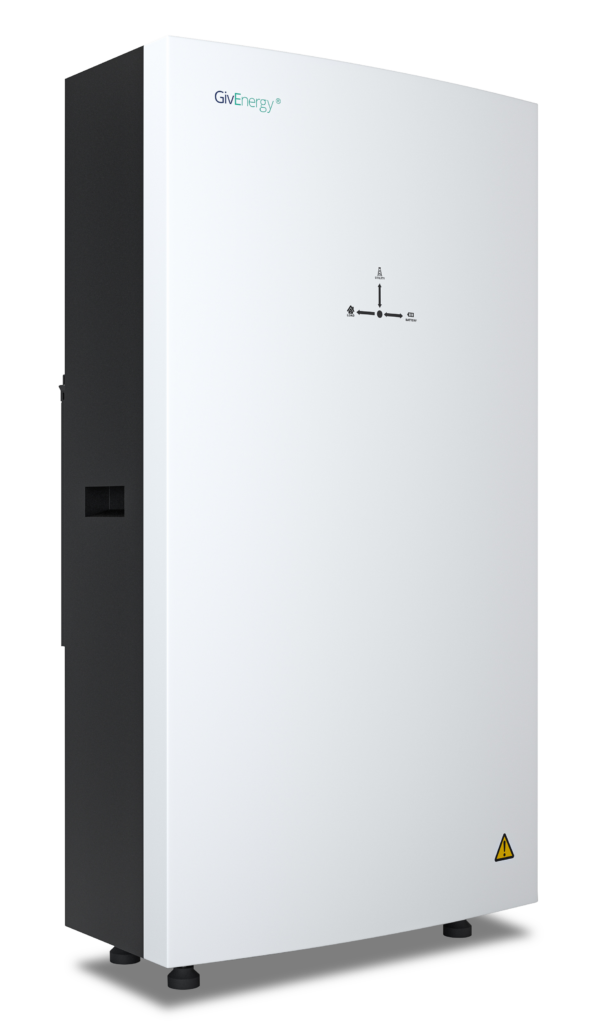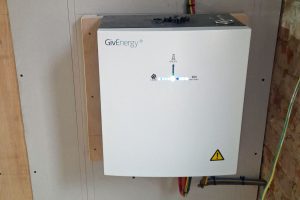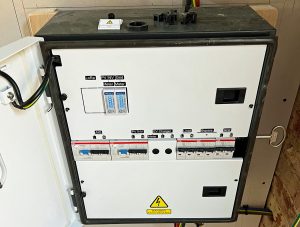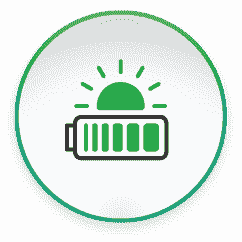GivEnergy All in One
We have been installing GivEnergy battery systems for quite a few years and have generally found them to be effective and value for money. Like most of the other systems we install they have consisted of separate inverters and batteries. For some time, however, we have heard of the launch of a new integrated system from GivEnergy, the All in One. We are pleased to announce that this system has launched, we have access to large stock of them, and we have completed our first All in One installation.
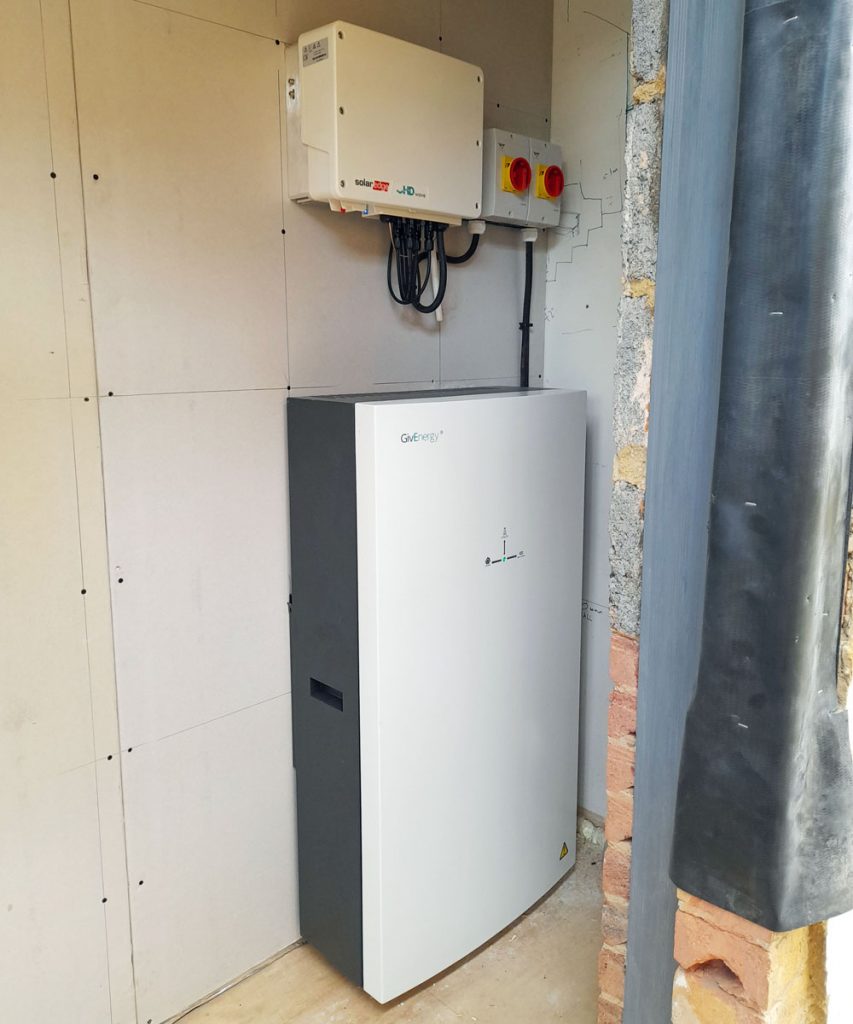
A GivEnergy All in One (installed as part of a property refurbishment), with solar inverter above (Image: Tanjent)
What’s so special about the All in One (AIO) then? It’s worth pointing out that the packaging of batteries and an inverter into a single box is not radical, but does provide distinct advantages which we’ll cover below. It’s only right to say that Tesla was a pioneer in this space, with its Powerwall 2 which combined a battery and inverter together. Also, it’s likely not a coincidence that the capacity of the All in One is 13.5kWh – exactly the same as the Tesla system – so it could be that GivEnergy has developed this system as a direct rival to Tesla.
So why are we excited to offer this system to our customers? Well, it’s because it’s much more than a repackaging. GivEnergy has clearly thought about the best way to install and connect a home battery system, and that shows in the AIO design. First, though, we should point out that the name ‘All in One’ is a bit of a misnomer. This is because currently it has to be installed with a second box, the Gateway (equivalent to the Powerwall’s Backup Gateway). It’s this Gateway that actually gets wired in to the house, and is then connected to the All in One box by a power cable and a communication cable.
GivEnergy Gateway
While it might seem to be a backward step to need another box just for wiring connections, it’s actually a very powerful design. It’s often necessary anyway to add a separate consumer board for solar and battery connections as UK homes are often underprovided for in terms of breakers and space for new connections. The Gateway provides a standardised attachment and allows for multiple connections in a single place.
The Gateway has wiring connections and breakers for the following:
- Grid connection
- Bypass (i.e. grid pass through)
- Backup loads
- The AIO box
- A solar PV input
- An optional electric vehicle (EV) charge point connection
It includes internal isolators, current clamps and metering. It also has a connection for an optional LoRa, a device for connecting to a remote meter (to save long wiring runs).
The solar and EV connections show that GivEnergy has thought about how the system integrates to a modern home, with solar panels and an EV.
The other connections highlight a main feature of this system – it can provide whole house backup in a power cut. That’s a feature that’s attractive to a lot of our customers. The Gateway has built in ‘islanding’ and can switch from grid power to battery power in less than 20 milliseconds. This provides completely seamless backup, allowing PCs and similar systems to keep working without any interruption. Not only that, but if your solar is wired into the Gateway’s PV input then it could continue to generate during a power cut.
Typically with whole house systems we have to redirect the entire incoming mains to the battery inverter (which might be in a shed or garage) and then back to the main consumer unit. With this system you can just insert the Gateway into the mains connection between the incoming fuse and the consumer board. Then you just have to run a single power connection between the Gateway and the AIO. This means you keep the bulky batteries in a convenient location, like a garage; you have minimal wiring; yet get whole house backup. A neat trick!
AIO Specifications
All of this wouldn’t be so useful if the core specifications of the system weren’t impressive, but they are. Here are some highlights of the AIO:
- 13.5kWh capacity, as mentioned above. We can see the evolution of GivEnergy battery sizes over time, from the 2.6 and 5.2kWh batteries, through their 8.2 and 9.5kWh series, to the latest AIO.
- 100% depth of discharge, so you get to use all 13.5kWh.
- An IP65 rating, so it can be installed outdoors.
- 6kW charging and discharging (with a peak power capability when needed of 30 seconds at 6.5kW or 10 seconds at 7.2kW).
- Dimensions (excluding feet, H x W x D): 1100mm x 600mm x 280mm.
- A large weight of 174kg – but internally it holds 4 removable battery packs, so it’s possible to install it (and potentially move it later) by moving the batteries one at a time.
- Up to 6 systems can be installed in parallel, for a total capacity of 80kWh.
- It can use cheaper time-of-use tariffs, like Economy 7, and is designed to work with more complex tariffs like Agile from Octopus.
- It has built-in integration with the GivEnergy EV charge point.
- Third party charge points can be powered through the integral EV charger connection. They would continue to operate in a power cut (though you need to be careful you don’t empty the battery quickly by doing so). V2H charging is also possible (though no further details are currently known).
We can see the AIO being very popular with our customers, and with its relatively straightforward installation process (given its advanced capabilities) we look forward to installing lots in the coming months. Get in touch if you’d like one, with or without solar.



